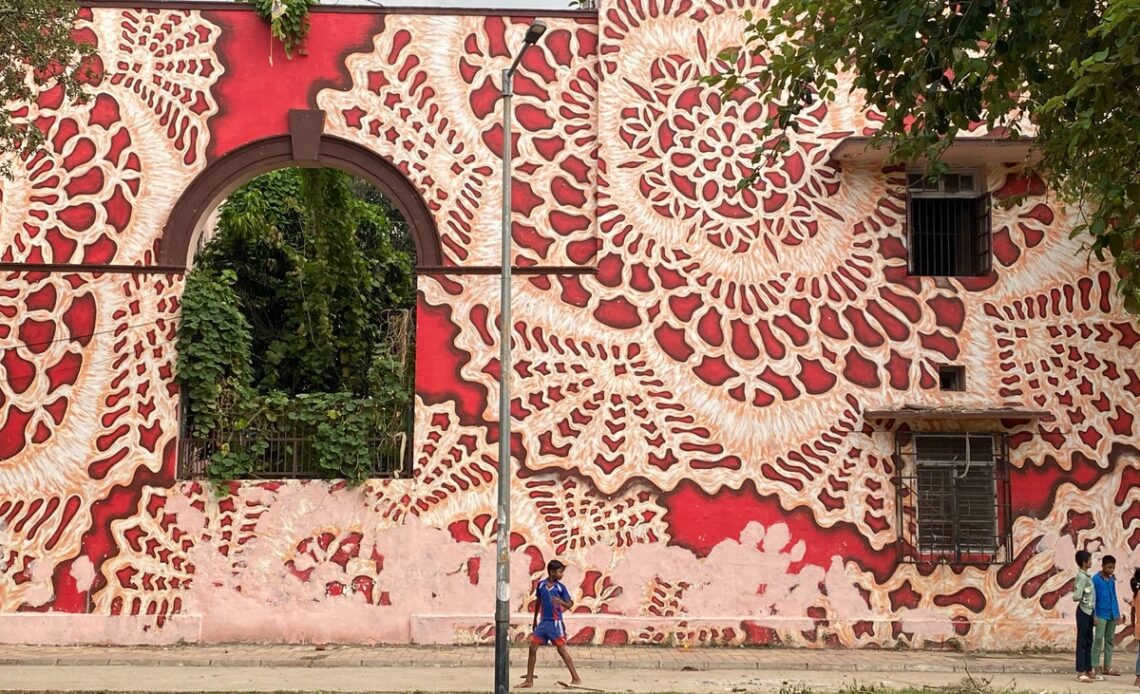I’ve always had a soft spot for Delhi’s painted public service messages. Whether they relate to the importance of handwashing or safe sex, they typically take the form of elaborate artworks painted onto walls by professional sign painters. Similarly, Delhi’s street art scene retains closer ties to government institutions than would ever happen elsewhere, but there’s a silver lining to this approach: namely, the way in which it’s given artists the chance to showcase their talent.
Take Tihar Jail, one of India’s largest jails. St+Art, the Delhi-based not-for-profit street art organisation, joined forces with prison authorities to daub lines from a poem onto its boundary walls, creating India’s longest mural – a 968-metre-long artwork referencing inmates’ feelings of isolation. Several of the street artists involved ran workshops for inmates, many of whom subsequently created their own murals on interior walls.
And then there’s India’s tallest mural – a 45-metre-high image of Mahatma Gandhi which covers one side of New Delhi’s Police Headquarters. Another example of an artwork borne from a collaboration between street artists (in this case ones connected to St+Art) and a government institution, it was painted by German street artist Hendrick ECB and Indian street artist Anpu Varkey in 2014, as part of the St+Art Delhi Street Art Festival. It was unveiled on Martyr’s Day (30 January) by the Lieutenant Governor of New Delhi.
Delhi’s street artists are determined to carve out their own style
(Tamara Hinson)
While the subject matter – a national hero – was familiar to locals accustomed to seeing campaign slogans painted onto Delhi’s walls, the techniques – such as spray painting – weren’t, and its appearance sparked a change in mindset. Anpu’s supersized, knitting cat, painted onto the side of a building in Delhi’s colourful Shahpur Jat neighbourhood, had a similar effect. “Because it was just a cat, some people still initially thought she was painting an advert, and they’d ask her where the logo was and what company it was advertising,” says Thanish Thomas, one of St+Art’s co-founders. But the curiosity tweaked by these murals worked in the organisation’s favour. The fact that Anpu was painting a cat – not a plea to practice safe sex, or wash hands – meant the area became famous…
Click Here to Read the Full Original Article at The Independent Travel…
